
Professor Paul Abbott (Australia)
9:00~10:30, August 26th, 2023
What's in a name? A review of endodontic diagnosis
Hall 401
- Presented over 1000 lectures and courses in 50 countries
- Published over 230 articles in refereed journals and 25 textbook chapters
- Editorial Board and Panel of Referees, International Endodontic Journal (UK) 1995-2015
- Editorial Advisory Board, Australian Dental Journal
- Editorial Advisory Board, Australian Endodontic Journal
- Editor-in-Chief of the international journal Dental Traumatology, 2015-2022
- Officer of the Order of Australia in the General Division (AO), 2015
- Dean and Head of the School of Dentistry at The University of Western Australia and Director of the Oral Health Centre of WA from 2003-2009
- DDSc, University of Western Australia, 2022
- FRACDS(Endo), Royal Australasian College of Dental Surgeons, 1990
- MDS, University of Adelaide, 1986
- BDSc, University of Western Australia, 1980
Diagnosis drives dentistry! Hence, in order to provide the appropriate treatment, clinicians must be able to diagnose the patient’s presenting condition. This in turn implies that clinicians must have a thorough understanding of the various conditions that occur and how they progress through their different stages. Unfortunately, pulp, root canal and peri-radicular conditions are not well understood. This is largely due to poor and inconsistent terminology that is seen in the literature as well as in day-to-day practice. The poor terminology that has been advocated in the last 10-15 years in itself demonstrates the lack of understanding of these conditions by those who proposed, and use, these inappropriate terms. Once the diseases are understood, the diagnostic process becomes more meaningful and easier. The diagnosis still requires a thorough examination with the application of all relevant diagnostic tests, plus an understanding of what information the various tests are telling us. In particular, pulp sensibility tests, percussion, palpation and transillumination are often not adequately utilized or interpreted correctly and so important information may not be available to establish the diagnosis. This presentation will provide a simple overview of the disease processes with emphasis on the various symptoms and clinical signs that lead to correct and meaningful diagnoses using appropriate terminology. Guidelines for effective and reliable diagnostic testing under different circumstances will also be outlined since the best test depends on what you are trying to diagnose. Research by the lecturer’s group has clearly demonstrated that the use of appropriate terminology is more likely to lead to appropriate treatment, and such terminology should not be based on the presence or absence of symptoms. More comprehensive terminology should be used. The lecture will demonstrate that words do matter!

Professor George Huang (USA)
13:30~15:00, August 26th, 2023
Twenty years of progress on dental stem cells and regenerative endodontics
Hall 401
- Board certified endodontist
- Professor and former Director for Stem Cells and Regenerative Therapies, Department of Bioscience Research at UTHSC, College of Dentistry
- Former Chair/Herbert Schilder Professor in Endodontics, at Boston University
- Former Chair in Endodontics at Columbia University
- Published >200 research articles, abstracts, review articles, including papers in Stem Cells, Stem Cells and Development, Stem Cell Research and Therapy, Stem Cell Reviews and Reports, Tissue Engineering, Journal of Endodontics, etc; and 21 book chapters in books such as Ingle’s Endodontics, Cohen’s Pathways of the Pulp, Tissue Engineering and Regenerative Dentistry, Tissue-Specific Stem Cell Niche, Material-Tissue Interfacial Phenomena, etc.
- Co-editor with Dr. Irma Thesleff for the textbook “Stem cells, craniofacial development and regeneration”, Wiley-Blackwell. Currently Associate Editor of Stem Cell Research and Therapy.
- Distinguished Scientist Award, IADR, 2015.
The discovery of dental stem cells (DSCs) in the 2000s has promoted the research interest in not only the characterization of these stem cells but also their applications in regenerative medicine. Along with the advancement of tissue engineering research, these DSCs have been tested for regeneration of various dental and oral tissues such as pulp, dentin, cementum, periodontal ligament (PDL) and bone. DSCs are highly angiogenic and neurogenic and can be reprogrammed into induced pluripotent stem cells (iPSCs) that possess a tremendous wide range of biomedical applications. There are at least six types of DSCs from human teeth that have been isolated and characterized, including dental pulp stem cells from pulp of permanent or deciduous teeth, PDL stem cells, stem cells from apical papilla, dental follicle stem cells and gingival mesenchymal stem cells. The emergence of regenerative endodontics has been in part influenced by the discovery of these DSCs. There are two categories of clinical approaches to regain the vitality of pulp. One is stem-cell based therapy that involves implanting exogenously processed stem cells into the root canal space, termed cell-based regenerative endodontic therapy (CB-RET). This approach has shown the regeneration of pulp- and dentin-like tissues in the canal space from animal and human clinical trial studies, suggesting potential practice of true “regenerative endodontics” in the future. On the other hand, revitalization or also termed revascularization, that does not involve the delivery of exogenously processed stem cells into the canals therefore is termed cell-free regenerative endodontic therapy (CF-RET). The various animal and human clinical studies have shown that the tissues developed in CF-RETs are fibrous connective tissue, some resembling periodontal ligament, not pulp-like, and the mineral tissue as cementum-like or bone, not dentin-like. Despite this drawback, CF-RET increases root thickness and eliminates endodontic pathosis with high clinical success rates.

Dr. Jarshen Lin (USA)
13:30~15:00, August 25th, 2023
Endodontic Prognosis: Clinical Guide for Optimal Treatment Outcome
Hall 401
- Director of predoctoral endodontics and director of extramural education at the Harvard School of Dental Medicine
- Received 14 teaching awards, including the HSDM Distinguished Junior Faculty Award, the Massachusetts Dental Society Faculty Recognition Award, the American Student Dental Association Faculty Award, the student-awarded Full-Time Faculty Award, Distinguished Faculty Award, and Best Lecturer Award.
- Recipient of the 2007 Edward Osetek Educator Award from the American Association of Endodontists
- Endodontics editor for various dental textbooks and serves on the editorial board of several journals
- Doctor of dental surgery degree from Chicago's Northwestern University in 1992
- Specialize in the field of endodontics at the University of Michigan in 1994
Outcome refers to the actual result of a patient’s condition due to their disease or following a specific intervention, with outcome measures including survival rates and success rates. Meanwhile, prognosis is a medical term that considers information from previous outcomes to anticipate the future developments of a patient’s condition and the likelihood of success following an intervention. Having a comprehensive understanding of the factors that influence treatment outcomes is important in endodontics, enabling providers to consider patient and tooth conditions and select procedures that are predicted to maximize tooth survival and minimize postoperative complications. The upcoming course will cover the factors that influence the outcomes of different endodontic treatments, such as primary root canal treatments for both vital and necrotic teeth, non-surgical and surgical re-treatments, and treatments for cracked teeth. This course will emphasize the importance of considering patient-, tooth-, and procedure-related factors as prognostic indicators before developing a treatment plan, with the ultimate goal of enhancing tooth durability and ensuring patient satisfaction. Learning objectives: 1) Explore various success measures, such as tooth survival, postoperative pain, and evidence of apical radiolucency. These measures will be used to delve into multiple prognostic factors that significantly impact the outcomes of the following endodontic treatments: .Primary root canal treatments for both vital and necrotic teeth .Non-surgical re-treatments .Surgical re-treatment .Cracked tooth treatments 2) Evaluate the potency of patient-, tooth- and treatment-related factors in determining the overall success and survival rates of teeth treated through endodontics. 3) Consider these prognostic factors to design a roadmap for endodontic treatment planning that maximizes the success and survival rates of teeth.

Professor Samuel Dorn (USA)
Professor and Chair of the Department of Endodontics at the West Virginia University School of Dentistry, USA Former Chair and Endowed Professor of the Department of Endodontics at the University of Texas at Houston
15:30~16:30, August 25th, 2023
Extraction-Replantation: an alternative surgical technique
Hall 401
- Dean’s Excellence Award for the Scholarship of Application, 2014
- Edgar D. Coolidge Award (AAE), 2013 (for Lifetime Achievement)
- Frank B. Trice, DDS Endowed Professorship in Endodontics, 2012
- Best Dentists in Houston (vote of peers), Houstonia Magazine, 2013-16
- Certificate of Merit, Region 7 of Pierre Fauchard Academy, 2002
- Distinguished Service Award (Florida Dental Association), 1998
- Fellow, Pierre Fauchard Academy, 1997
- Fellow, International College of Dentists, 1995
- Hurricane Hero (East Coast District Dental Society), 1993
- Fellow, American College of Dentists, 1992
- Dentist of Year, East Coast District Dental Society, 1987
- DDS, Fairleigh Dickinson University School of Dentistry
- CAGS, Nassau County Medical Center, 1976
There are instances when a patient desires to save a previously treated tooth, but conventional surgery is impractical. The technique of extracting such a tooth, correcting the problem, and replacing it in the socket will be investigated and described in detail. In addition, the speaker will discuss the various materials available to repair the tooth either apically or laterally, and the evidence-based literature that is involved in the decisions being made.
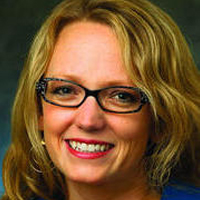
Professor Jennifer Gibbs (USA)
15:30~16:30, August 26th, 2023
Persistent pain after endodontic treatments- can we prevent it?
Hall 401
- Dental degree (DDS) and Ph.D. in Pharmacology from the University of Texas Health Science Center San Antonio
- Endodontic training, post-doctoral research, and a Master’s degree (MAS) in Clinical Research from the University of California San Francisco
- Assistant Professor at Harvard School of Dental Medicine
- Division Head of Endodontics, and the program director of the Advanced Graduate Program in Endodontics
- Diplomate of the American Board of Endodontics
- Past Educator Fellow of the American Association of Endodontics Foundation
- Research has been funded by the NIH/NIDCR, the AAE foundation, and other foundations
The diagnosis and treatment of dental pain is fundamental to the practice of Endodontics. However, the experience of pain is complex with biological, psychosocial, and affective components, which means there can be a disconnect between the experience of pain in a patient, and the presence of clinical disease. Teeth are uniquely innervated and cause severe pain and sensitization of the nervous system, even in the absence of pathological infection. Persistent pain can occur even after successful endodontic treatment, due to changes in the nervous system that has been triggered by the original injury to the pulp. Endodontic materials, including sealers can cause injury and inflammation to nervous tissues, further complicating the clinical picture. Understanding the mechanisms by which these materials interact with the nervous system is crucial for successful treatment outcomes. In this presentation, we will discuss recent data describing the effects of different classes of Endodontic sealers on sensory neurons, diagnostic dilemmas related to pain, clinical strategies for when pain doesn’t go away after Endodontic treatment.
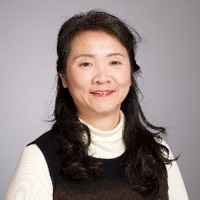
Dr Yu-heng Lin (Taiwan)
11:00~12:00, August 27th, 2023
Advances in Root Canal Cleaning and Disinfection
Hall 401
EDUCATION :
- 1999-2001 M.S.D., Certificate in Endodontics, Case Western Reserve University, Cleveland, OH, U.S.A.
- 1990-1996 D.D.S., China Medical University, Taichung, Taiwan
EMPLOYMENT RECORD :
- 2002-2006: Attending doctor, Department of Endodontics, Chang-gung Memorial Hospital, Tauyuan, Taiwan
- 2008-2010: Endodontists, Elite Dental Clinic, Taipei, Taiwan
- 2015 – present: Attending doctor, Department of Endodontics, Chang-gung Memorial Hospital, Tauyuan, Taiwan
- 2017: Program director of Endodontics Department of Endodontics, Chang-gung Memorial Hospital, Tauyuan, Taiwan
BOARD CERTIFICATIONS :
- Apr., 2010 Diplomate, American Board of Endodontics
- May, 2005 Certified Endodontist, Academy of Endodontology, R.O.C.
The concept of minimally invasive treatment has widely gained popularity among the profession. As preservation of cervical dentin merge into the main purpose root canal treatment, thorough cleaning and disinfection of the root canal system still dominate the outcome of successful root canal treatment. Revolution of technology has changed cleaning and disinfecting the root canal system. The lecture will introduce on new advances of root canal disinfection for minimal invasive preparation including multi-sonic irrigation, nanoparticles and photodynamic therapy.
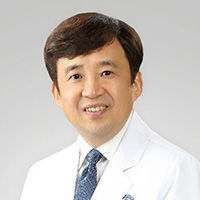
Professor Euiseong Kim (South Korea)
Professor, Department of Conservative Dentistry, Yonsei University, Seoul, Korea
Adjunct Assistance Professor, University of Pennsylvania, USA
15:30 - 16:15, August 25th, 2023
Outcomes of endodontic microsurgery
Room 402AB
- DDS, MSD, PhD Yonsei University, Seoul, Korea.
- Endodontic Certificate, University of Pennsylvania.
- Member, National Academy of Medicine of Korea.
- Dean, Dental College of Yonsei University.
- President, Korean Association of Endodontics.
- President, Organizing Committee of the IFEA 2018 Seoul.
- Awarded Grand Prize, Excellence of Research, Korean academy of Dental Science.
- Scientific Advisory Board, Journal of Endodontics
- Published more than 150 articles in peer-review international journal on surgical endodontics, pulp regeneration and clinical endodontics.
- Co-author of 16 endodontic textbooks
The prognostic data about Endodontic Microsurgery attests to the fact that microsurgical success rates are far superior to traditional surgery. At the same time, within the surgical technique, each step of the procedure is important to ensure successful outcome. Incorporating microsurgical principles, the success rate of endodontic microsurgery has been reported to be approximately 90%. This presentation is based on a 20-year clinical study of microsurgery at the Microscope Center, Department of Conservative Dentistry of Yonsei University, Korea, since 2001. It will critically review the short-term and long-term outcomes of endodontic microsurgery as well as the outcome of micro re-surgery. In our study 192 teeth were followed up every 6 months for 2 years and every year up to 10 years. Over the 5-year period, 172 teeth (91.5%) were successes. The teeth classified as successes were evaluated up to 10 years, with a final follow-up rate of 60.5% (104 of 172 cases). Out of 104 followed-up cases, 97 cases were classified as success in the long term: 91 with complete healing and 6 with incomplete healing. The overall maintained success rate was 93.3%. Regarding micro re-surgery, 54 teeth requiring surgical retreatment were studied. 39 teeth (92.9%) had successful outcomes. This lecture will also deal with the prognostic factors for clinical outcomes in microsurgery based on our clinical studies, especially periodontal involvement, bony defect and lesion size. The healing success rates of endodontic microsurgery will be compared for cases with lesions of endodontic origin and with cases of combined endodontic-periodontal origin. Effects of bone tissue deficiency and lesion size on the outcome will be discussed based on clinical studies of intraoperative measurements of bone defects and 3-dimentional analyses using cone-beam computed tomography.

Professor Sung-Chih Hsieh (Taiwan)
Professor, School of Dentistry, College of Oral Medicine, Taipei Medical University (2021-)
Vice Chairman, School of Dentistry, Taipei Medical University (2017-)
Chairman, Department of Endodontics, School of Dentistry, College of Oral Medicine, Taipei Medical University (2012-)
09:45~10:30, August 27th, 2023
Root canal obturation: the essential concepts and novel evolution
Hall 401
- D.D.S. Taipei Medical University (1984-1990)
- D.Sc.D. in Endodontics, Boston University (1994-1998)
- C.A.G..S in Endodontics, Boston University (1996-1998)
- AAE specialist member (1996-)
- Director of Endodontic department, Taipei Medical University Wan Fan Hospital (1999-2018)
- Assistant Professor, School of Dentistry, College of Oral Medicine, Taipei Medical University (2003-2012)
- Diplomat, Academy of Endodontology, ROC (Taiwan) (2004-)
- Endodontist Examination Committee, Academy of Endodontology, ROC (Taiwan) (2007-2017)
- Supervisor, The Academy of Advanced Prosthodontists in Taiwan (2008-)
- Executive director, Academy of Endodontology, ROC (Taiwan) (2009-2017)
- Chief editor, Journal of Endodontic Science (2011-2015)
- Associate Professor, School of Dentistry, College of Oral Medicine, Taipei Medical University (2012-2020)
- President, Academy of Endodontology, ROC (Taiwan) (2017-2019)
- Supervisor, Academy of Endodontology, ROC (Taiwan) (2021-)
- Research specialty: Microscopic Endodontics/Schilder’s Technique/Vertical Compaction of Warm GP Technique; MTA research/Gutta-Percha thermal behavior research; Non-destructive test of Ni-Ti instrument analysis; Resonance Frequency in Endodontics; Bone biology/Growth Factors/Pulp stem cell; NanoDiamond Endodontic Irrigation.
Root canal obturation is a critical step in endodontic treatment, as it involves the complete filling of the root canal system with an inert material to prevent bacterial reinfection and promote healing. Appropriate root canal obturation can ensure the aseptic and long-term success of endodontic treatment. The essential concepts of obturation include the use of a biocompatible, dimensionally stable material that can be easily manipulated and adapted to the canal space. Historically, gutta-percha has been the material of choice for obturation, with the use of sealers to enhance its sealing ability. At that time, gutta percha was preferred over poor quality root canal sealers, which would shrink and wash out over time, leaving a gap. Thus, compaction techniques aimed to replace the soluble sealer with the insoluble gutta percha. However, the recent development of a new generation of sealers with superior properties, such as bioceramic sealer, has called into question the axiom of minimizing the sealer interface. The bioceramic sealer is dimensionally stable, non-soluble, biocompatible, antibacterial, hydrophilic, and can bond to dentin, indicating a new era of endodontic obturation. Minimal invasive endodontics is a concept that emphasizes the preservation of healthy tooth structure during root canal treatment, while still achieving optimal cleaning, shaping, and obturation of the root canal system. Hydraulic condensation with bioceramic sealer may be a novel evolution of root canal obturation. This presentation provides an overview of the essential concepts of root canal obturation, the vertical compaction of warm gutta percha technique including the thermal profiles of different gutta percha, the indication of different obturation technique and materials and highlights the recent advancements in materials and techniques that have improved the quality and success of endodontic treatment.
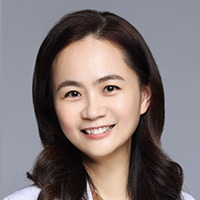
Professor Yuan-Ling Lee (Taiwan)
Head, Division of Endodontics, Department of Dentistry, National Taiwan University Hospital, Taiwan
Associate Professor, Graduate Institute of Clinical Dentistry, School of Dentistry, National Taiwan University, Taiwan
11:45~12:30, August 26th, 2023
An update of endodontic treatment in young permanent teeth
Hall 401
- D.D.S, School of Dentistry, Taipei Medical University, Taipei, Taiwan, 1991-1997
- M.S. / Certificate – Endodonitcs, Graduate Institute of Clinical Dentistry, National Taiwan University, Taipei, Taiwan, 1999-2001
- Ph.D. - Material Science, Graduate Institute of Clinical Dentistry, National Taiwan University, Taipei, Taiwan, 2001-2006
- Research Fellow, Cariology Restorative Science and Endodontics, School of Dentistry, University of Michigan, Ann Arbor, MI, USA, 2004-2005
- Diplomate of the Board, Endodontic Specialty Board, Academy of Endodontology R.O.C., since 2004
- Adjunct Visiting Staff, Division of Endodontics, Department of Dentistry, National Taiwan University Hospital, Taipei, Taiwan, 2005-2006
- Visiting Staff, Division of Endodontics, Department of Dentistry, National Taiwan University Hospital, Taipei, Taiwan, since 2006
- Member of the Council, Academy of Endodontology R.O.C., since 2007
- Assistant Professor, Graduate Institute of Clinical Dentistry, School of Dentistry, National Taiwan University, Taipei, Taiwan, 2007-2018
Young permanent teeth are susceptible to pulp diseases due to rapid caries progression, facilitated by their high pulp horn and immature mineralization. However, conventional root canal treatment becomes challenging due to the short roots, thin dentin walls, and open root apices commonly found in these teeth. Therefore, vital pulp therapy and regenerative endodontic procedures using tissue engineering principles offer the best treatment options for young permanent teeth. These approaches aim to maintain root development, promote the formation of thick dentin walls, and achieve normal root length. Several factors need to be considered when determining the appropriate endodontic treatment for young permanent teeth. In cases of pulp diseases caused by caries, accurate pulp diagnosis, effective infection control, and thorough cleaning of the remaining pulp tissue or canal space are crucial for successful treatment outcomes. The application of calcium silicate biomaterials, such as mineral trioxide aggregate (MTA) or Biodentine, is recommended. However, in situations involving trauma-induced pulp diseases, factors such as crown or root structure damage and potential pulp tissue damage resulting from tooth displacement should be taken into account. In some instances, young permanent teeth may present root crack with persistent infections that cannot be controlled non-surgically. In such cases, intentional replantation or apical surgery with Biodentine retrograde filling may be considered as alternative treatment options. Overall, understanding the unique challenges associated with treating young permanent teeth and considering the specific clinical circumstances are essential for selecting the most suitable endodontic interventions. By following these principles, clinicians can navigate the complexities and achieve favorable treatment outcomes for their young patients.

Professor Uei-Ming Li (Taiwan)
Adjunctive Assistant Professor, School of Dentistry, College of Oral Medicine, Taipei Medical University
09:00~09:45, August 27th, 2023
An update of the thermomechanical treatment of nickel-titanium rotary instruments
Hall 401
- Adjunctive Attending Doctor of the Department of Endodontics of the NTU Hospital since 2001
- Adjunctive Assistant Professor of School of Dentistry, College of Oral Medicine, Taipei Medical University since 2009
- Diplomat, Academy of Endodontology, ROC in 2001
- Visiting scholar at the College of Dentistry, the Ohio State University, USA in 2005
- AAE professional member since 2001
- Best PhD thesis Award of Medical college, National Taiwan University in 2007
- Advanced specialty training in endodontics at the National Taiwan University Hospital in 1998
- PhD in material science and surface treatments of Nickel Titanium Rotary Instruments. National Taiwan University, 2007
- MS, Specialize in the field of Endodontics, National Taiwan University, 2001
- DDS from Kaohsiung Medical University, Taiwan in 1993
In the past 30 years, the revolutionary development of incorporating nickel-titanium (NiTi) into endodontic files has greatly transformed the methods of root canal instrumentation. The unique material properties make them particularly suited for endodontic treatment. However, there are still a lot of problems demanding solutions till now. Instruments separation and surface blunt after repeated uses are the most concerned problems among them. The two main reasons of unexpected separation of NiTi endodontic instruments are the cyclic fatigue and the torsional overloads. As results, manufacturers made a great effort to find out any parameters that directly or indirectly influence mechanical properties of NiTi rotary instruments. The mechanical performance of NiTi alloys is according to their microstructure and associated thermomechanical treatment history. Heat treatment is one of the most fundamental approaches toward adjusting the transition temperature in NiTi alloy, which affects the fatigue resistance of NiTi rotary instruments. The newly developed NiTi instruments made from the next generation of NiTi alloys represent improved flexibility and better fatigue resistance. The special thermomechanical processing is a metallurgical process that integrates hardening and heat treatment into a single process. Although the details of the thermomechanical treatment history of the new NiTi wires remain unknown, it seems that thermal processing is a very hopeful method of gaining important benefits with regards to the efficiency and safety of NiTi rotary instruments.
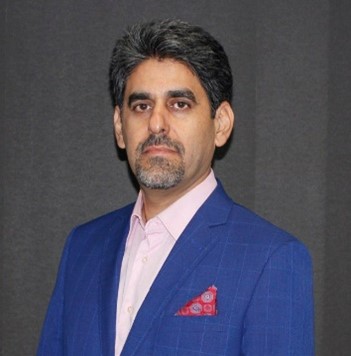
Dr Mohsen Ramazani (Iran)
Iranian center for Endodontic Research, Shahid beheshti University of medical sciences, Tehran, Iran
Medical Education Develop Center, Mazandaran University of Medical Sciences, Sari, Iran
Director of International Affairs, Mazandaran University of Medical Sciences
11:00 - 11:45, August 26th, 2023
Vital pulp therapy: An update of classifications, indications, challenges and follow ups
Hall 401
- Iranian Center for Endodontic Research, Research Institute of Dental Sciences, Shahid Beheshti University of Medical Sciences, Tehran, Iran
- Scientific Chair of the 5th International Symposium of Iranian Association of Endodontists (Vital Pulp Therapy and Regenerative Endodontics) - 2021
- International Representative of Iranian Association of Endodontists, 2015- 2019
- Secretary of Asian Pacific Endodontic Confederation, 2021- 2023
Currently, Endodontics is facing outstanding innovative advancements in diagnosis, and clinical interventions to achieve more sustainable outcomes both for practitioners and the patients. Vital pulp therapy and regenerative endodontic procedures are the most important ones. VPT as a dedicated therapeutic method is targeting pulpal tissue conservation, protection, and maintenance when compromised by different causes. Respecting the inherent capacity of dental pulp to repair actively, VPT seems to be more practical and successful contemporarily based on higher chances of case selection, new biomaterials availability, easier ways of follow ups and also modalities attainable to overcome shortcomings and failed cases if any. As it is needed to extent knowledge and experience of pulp biology, physiology, microbiology, caries progression, dental materials, the aim of this presentation is to provide the last information released on classification, indications, challenges encountered, and modalities to qualify and improve the techniques. Hopefully evidence-based endodontics would help us to reach the best outcomes in case of vital pulp therapy.

Professor Jeffrey M Coil (Canada)
Director, Graduate Endodontics Program, Department Oral Biological & Medical Sciences, Faculty of Dentistry, University of British Columbia, Vancouver, B.C. Canada (Since 2008)
11:00~11:30, August 26th, 2023
Clinical decision making and the use of CBCT
Room 402AB
- D.M.D., M.S.D. and Ph.D., University of British Columbia.
- Certificate in Endodontics at the University of Washington in 1993
- Diplomate, American Board of Endodontics
- Mentor of the Northwest Endodontic Study Club and Seminar
- Editorial consultant for the Journal of the Canadian Dental Association and on the Scientific Advisory Board for the Journal of Endodontics
- Past President of the Canadian Academy of Endodontics, a member of the British Columbia Society of Endodontist, Canadian Academy of Endodontics, and the American Association of Endodontists, and a Fellow of the Royal College of Dentists of Canada, Academy of Dentistry International, and American College of Dentists
This presentation will highlight the use of Cone Beam Computed Tomography (CBCT) information in decision making for diagnosis, treatment options and recommendations, and assessments of post-treatment outcomes. Cases will be used to demonstrate how CBCT has strongly influenced endodontic practice. Additionally, CBCT can aid in the differentiation and management of endodontic failure and failure of endodontically treated teeth. This presentation will describe the difference between these two types of treatment failure. Participants will learn how to provide an appropriate endodontic clinical examination, assess radiographic images of endodontically treated teeth, including CBCT images. Discussion will include how this information will inform your diagnosis and treatment planning decisions, in order to provide patients with treatment options.
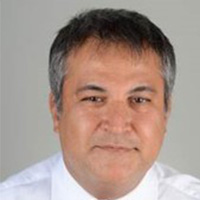
Dr. Mehmet Baybora Kayahan (Turkey)
16:45~17:15, August 25th, 2023
The determinants of outcome in Retreatment
Room 402AB
- Istanbul University, Faculty of Dentistry (1995)
- Research assistant at Istanbul University, Faculty of Dentistry, Department of Endodontics (1995-2000)
- Dr. Med. Dent. Degree (2000)
- Assistant Professor at Yeditepe University, Faculty of Dentistry in 2002
- Associate Professor at Yeditepe University, Faculty of Dentistry in 2008
- Professor at Okan University, Faculty of Dentistry in 2014
- Director of Department of Endodontics at Istanbul Health and Technology University in 2021
- Author of many local and international journals
- Give courses and conferences on root canal shaping and procedural problems in Endodontics
- Certified member of the European Society of Endodontology
- Chair of IFEA Education Committee
- Currently the president of the Turkish Endodontic Society and Immediate Past President of Asian Pacific Endodontic Confederation
The aim of endodontic treatment is to prevent or cure apical periodontitis. Root canal treatment is a predictable procedure with a high survival rate. However, procedural problems such as broken instruments, ledge formation, transportation of the canal, root perforation, and extrusion of the irrigants can affect the prognosis. On the other hand, patients demand the retention of their teeth more than ever before, and this results in an increasing necessity for the procedure. Retreatment is easier with the help of Ni-Tis, irrigation systems, biomaterials, and ultrasonic instruments. Even hopeless teeth can be saved. There is no doubt that both root canal treatment and retreatment of teeth are feasible and economical ways to preserve function. In this lecture, factors that affect the outcome of retreatment will be discussed based on literature and presented cases
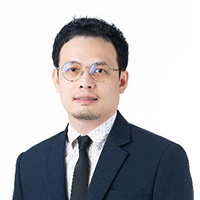
Professor Thanaphum Osathanon (Thailand)
16:00~16:30, August 26th, 2023
Bioactive molecules targeting specific cell signaling to promote dentin bridge formation
Room 402AB
- Deputy Director of CU Dental Innovation Center, Chulalongkorn University, Thailand
- Director of Dental Stem Cell Biology Research Unit, Center of Excellence in Regenerative Dentistry, Chulalongkorn University, Thailand
- Director of Oral Biology Graduate Program, Chulalongkorn University, Thailand
- Associate Editor, Section Regenerative Dentistry, Frontiers in Dental Medicine
- Editorial Board Member, Scientific Reports
- IADR-SEA Research Category Awards – Regenerative Dentistry
- Former Qualified Experts in the Center for Dental Competency Assessment and Accreditation, Thai Dental Council.
- Former Chair of the Committee for Biomedical and Dental Science Examination, the Center for Dental Competency Assessment and Accreditation, Thai Dental Council.
- Doctor of Philosophy in Oral Biology, University of Washington, USA
- Doctor of Dental Surgery, Chulalongkorn University, Thailand
Vital pulp therapy aims to maintain the vitality of dental pulp tissue by stimulating tertiary dentin formation. Current materials used in clinical treatment still have several drawbacks due to their physical and biological properties. Innovative materials containing bioactive molecules have been introduced to facilitate dentin/pulp complex regeneration. Among current materials for vital pulp therapy, calcium silicate-based materials exhibited better biocompatibility, differentiation induction, and reparative dentin formation in vitro and in vivo. Dental pulp tissues exposed to calcium silicate-based materials markedly enhanced Wnt signaling activation. The Wnt agonist and ligands enhanced reparative dentin formation in vivo. Mechanistically, Wnt signaling modulated inflammation and immune responses and promoted odontogenic differentiation. In addition, Wnt interacted with Notch signaling to control odontogenic differentiation and mineralization. In another aspect, decellularized extracellular matrix derived from human dental pulp stem cells induced mineralization by activated Wnt signaling. This evidence suggests that Wnt signaling modulation represents a promising strategy for vital pulp therapy and the regenerative approach of the dentin/pulp complex.
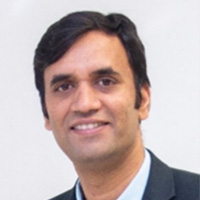
Professor Kacharaju Kranthi Raja (Malaysia)
11:30~12:00, August 26th, 2023
Enhancing endodontic diagnosis and treatment planning with CBCT technology for optimal clinical outcomes
Room 402AB
- Deputy Dean (Research, Post Graduate, Research and Clinical Services), MAHSA University since February 2017
- Post Graduate Co-Ordinator, Faculty of Dentistry, MAHSA University from 2015 to 2020
- Head Of the Department of Conservative Dentistry and Endodontics at MAHSA University from 2014 to 2016
- Head Of DDS (Doctor Dental Surgery) year III in Faculty of Dentistry in MAHSA University College Kuala Lumpur from 2012 to 2014
- Senior Lecturer and in faculty of dentistry in MAHSA University College Kuala Lumpur from December 2011 till Feb 2017
- Assistant Professor in Department of Conservative Dentistry and Endodontics at SVS Institute of Dental Sciences for a period of 1 year 6 months
- Lecturer in Kamineni Institute of Dental Sciences, Narketpally for 2 yrs. in the Departments of Conservative Dentistry and Endodontics and oral surgery. 2005-2007
Cone beam computed tomography (CBCT) has become an indispensable radiographic modality for dentists, providing high-quality, accurate three-dimensional (3D) representations of maxillofacial structures. The development of CBCT has highlighted the inadequacies of conventional radiography which are compression of three-dimensional anatomy, geometric distortion, and anatomical noise Needless to state, clinicians should have a thorough knowledge of CBCT before prescribing/using it for patients. This lecture will discuss the applications, advantages, and disadvantages of CBCT in endodontics. A variety of clinical cases will be presented to the audience to provide a holistic understanding of CBCT in Endodontics.
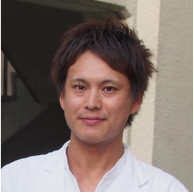
Professor Motoki Okamoto (Japan)
15:30~16:00, August 26th, 2023
Current location of vital pulp therapy
Room 402AB
- 2004-2010 DDS, Niigata University Dental School, Japan
- 2010-2011 Resident, Osaka University Dental Hospital, Osaka, Japan
- 2011-2015 PhD, Osaka University Graduate School of Dentistry, Japan
- 2015-2018 Clinical fellow, Osaka University Graduate School of Dentistry, Osaka, Japan
- 2018-2023 Assistant professor, Department of Restorative Dentistry and Endodontology, Osaka University Graduate School of Dentistry, Osaka, Japan.
- 2023-to date Postdoctoral research associate, Department of Oral Science and Translational Research, Nova Southeastern University College of Dental Medicine, USA
- Pulp Biology & Regeneration Group Young Investigator Prize for Innovation. International association dental research (IADR). 2017
- Academic Encouragement Award 2022, The Japanese Society of Conservative Dentistry, 2022
- Editorial Board Member, Clinical and Experimental Dental Research
- Scientific Advisory Board Member, Journal of Endodontics
- Editorial Review Board Member, Frontier in Dental Medicine
Vital pulp treatment (VPT) is a therapeutic strategy aimed at conservatively managing deep carious lesions and the exposed pulp. VPT has recently expanded through the use of hydraulic-calcium-silicate cement, cone-beam CT, and dental operating microscopy (DOM), as well as an improved understanding of pulpal biology and repair mechanisms. It is widely accepted that the treatment strategy for irreversible pulpitis is pulpectomy. Recently, some reports demonstrated that partial or cervical pulpotomy may be a feasible option for the treatment of irreversible pulpitis. Regarding to how to treat the deep caries or the exposed pulp, consensus documents from American Association of Endodontics and The European Society of Endodontology are available for our clinical treatment. However, despite the positive opinion of VPT as a strategy for irreversible pulpitis, the idea is not widespread generally, even in Europe and the United States. The factors for this include the difficulty of dental pulp diagnosis and the lack of a consistent teaching education for handling exposed pulp. In this symposium, I will show several cases related to VPT with dental operating microscopic video. These case series included successfully in preserving the activity of the pulp by partial pulpotomy caries induce pulpal micro abscess. Here we also discuss dressing agent and material induce pulpal repair the exposed pulp. There may be restrictions depending on the circumstances of each country and available dental materials, but it may lead to new discoveries. Additionally, we will find and discuss the current issues to be solved of VPT and introduce our department's research to solve them.
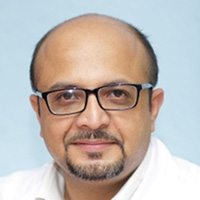
Dr Suman Gautam (Nepal)
16:15~16:45, August 25th, 2023
Iatrogenic perforation: Clinical management and outcome
Room 402AB
- Lecturer in Kantipur Dental College from 29-4-2009 to 14-01-2011 in Department of Conservative dentistry & Endodontics.
- Associate professor and Head of department of Conservative dentistry & Endodontics in Dental College-NMC from 15-01-2011 till date.
- BDS program coordinator in Dental College-NMC.
- Post Graduate student guide.
- Editor –in –Chief of Journal of Nepal Dental Association (2012-17)
- General Secretary of Conservative Dentistry and Endodontic Association of Nepal (CDEAN) 2015-18.
- Vice President of Conservative Dentistry and Endodontic Association of Nepal (CDEAN) 2018-20.
- President of Conservative Dentistry and Endodontic Association of Nepal (CDEAN) 2020-22.
- He is the pioneer in the field of Microscopic Endodontics in Nepal.
- His interest is Non -surgical retreatment, Microsurgery, cbCT in endodontics.
- He is keen learner and incorporate new technologies and techniques in his routine work.
Iatrogenic root perforation is a complication that can occur during endodontic treatment. It is a significant problem for the tooth integrity as it can lead to inflammation, infection and ultimately tooth loss. Despite the potential complications, the prognosis for iatrogenic root perforation is generally favorable with appropriate management. The clinical management of iatrogenic perforation depends on the location and size of the perforation as well as the severity of the damaged caused along with-it proper communication with the patient is of utmost importance. Treatment options include sealing of the perforation site with biomaterial non surgically or surgically depending upon the access to the site, degree of contamination and the condition of the surrounding tissues. The outcome depends on several factors, including the extent of injury, the patient’s overall health and the timely and appropriate management of the perforation. This presentation will explore various clinical condition of iatrogenic root perforation, its management with various biomaterials and its outcome assessed clinically and radiographically.
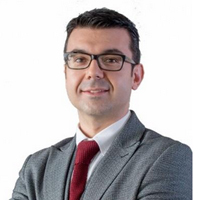
Dr. Mustafa Gündoğar (Turkey)
16:30~17:00, August 25th, 2023
Peer proven technologies to improve the clinical efficacy of irrigation activation systems
Hall 401
- Marmara University, Faculty of Dentistry, DDS.
- Endodontics Program of Graduate Study offered by Institute of Health Sciences at Marmara University with PhD degree
- Areas of interests are; nickel titanium file’s kinematic properties, cyclic fatigue resistances of Ni-Ti Rotary systems, and latest trends in endodontic irrigation.
- Working at the Regenerative and Restorative Medicine Research Center (REMER) since 2020 and mainly focuses on artificial intelligence and regenerative endodontics and laser technology at endodontics.
- Published more than 50 original research articles in national and international peer-reviewed and indexed journals.
- Active member of the Turkish Dental Association (TDB), Turkish Endodontic Society (TED), European Society of Endodontology (ESE).
The success of root canal treatment depends on the complete removal of infected microbial content from the root canal system. Today, with the development of nickel-titanium rotary file systems, root canal shaping has become quite simple and fast. Despite mechanical reduction of the bacterial population, it is not possible to eliminate the whole bacteria and root canal debris without the use of antibacterial solutions and activation systems from the root canals. New technology makes it possible to clean the root canal space without damaging tooth structure. In this presentation, characteristics of known and developing root canal irrigation agents and irrigation activation methods will be evaluated under the light of current literature information.
1.How to efficiently use NaOCI with new scientific based studies.
2.How to efficiently use activation systems and adapt them to minimal invasive endodontics.
3.Learn SWEEPS, R-SWEEPS and the GentleWave technology for root canal irrigation.
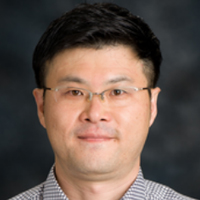
Professor Ji Wook Jeong (USA)
16:30~17:00, August 26th, 2023
Palatal root end surgery
Hall 401
- DMD, Kyunghee University, School of Dentisry, Seoul, South Korea, 2001
- MSD, Endodontics, The University of Texas, School of Dentistry at Houston, 2017
- Endodontic Certificate, The University of Texas, School of Dentistry at Houston, 2017
- Diplomate of the American Board of Endodontics
- Course director of Endo-surgery for postgraduate trainees in Endodontics, The University of Texas, School of Dentistry at Houston
- Scientific Advisory Board of Journal of Endodontics
- Credential Associate Fellow of the American Academy of Implant Dentistry 2008-2012
“Palatal Root-end Endodontic Surgery (PRES)” involves the root-end resection and root-end filling of the palatal root of a maxillary molar and can be one of the most challenging procedures in endodontics. While the transantral approach for PRES and 3D navigated PRES have been advocated, there are cases that are not amenable to transantral PRES or 3D navigated PRES due to anatomic variations therefore it is necessary for clinicians to be knowledgeable in the traditional PRES approach. In this presentation, I will cover the anatomical, technical, and decision-making aspects of PRES.
At the conclusion, participants should be able to:
1.Identify key anatomical landmarks including the greater palatine foramen, spine, and grooves in order to locate the greater palatine artery and nerve in relation to PRES.
2.Design the appropriate flap to provide strategic access to the palatal root apex in order to facilitate the root-end resection and root-end preparation and filling.
3.Describe a novel modified continuous sling-mattress suture technique.
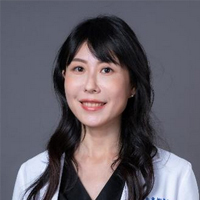
Dr Hui-Na Lee (Taiwan)
12:00~12:30, August 26th, 2023
Application of digital technology and guided endodontics
Room 402AB
- Superintendent secretary, KMUH
- PhD student , School of Dentistry, KMU
- Member of council of the Academy of Endodontology,Republic of China (AE,ROC)
- Specialist in operative dentistry, Taiwan Academy of Operative Dentistry (TAOD) Endodontic
- Specialist in the Academy of Endodontology, R.O.C. (Taiwan)
- Specialist in family dentistry, The Association of Family Dentistry, R.O.C. (Taiwan)
The success of root canal treatment depends on accurate diagnosis, effective treatment planning, and overcoming the challenges of root canal anatomy. Digital endodontics, which combines modern tools, is increasingly being used for complex cases. Artificial intelligence interpretation of Laser Doppler provides precise diagnosis, while advances in CBCT equipment and software render true internal anatomy visible. With 3D planning, guided endodontics has become a viable option. These tools are applied at different stages of endodontic treatment, with specific indications and clinical efficacy. Digitally guided endodontics is a precise, effective, safe, and clinically applicable strategy that integrates technical resources and digital planning into clinical endodontic practice. Overall, these techniques represent a significant advancement in the field of endodontics, with potential for revolutionizing the way we approach complex cases.
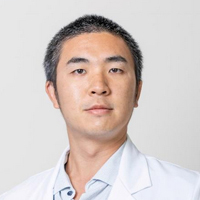
Dr Ying-Hui Su (Taiwan)
12:00~12:30, August 27th, 2023
Static/dynamic navigation in clinical endodontics
Hall 401
- Chung Shan Medical University, DDS. 2005 September - 2010 May
- Kaohsiung Medical University, MS 2013 September – 2017 May
- Chief Resident, Department of Endodontics and Operative Dentistry, Kaohsiung Medical University Memorial Hospital. 2017 September – 2018 July
- Visiting staff, Department of Endodontics and Operative Dentistry, Kaohsiung Medical University Memorial Hospital. Since 2018 August
- Visiting staff, Dental department, Kaohsiung Municipal CiJin Hospital.Since 2019 August
- Specialist in operative dentistry, Taiwan Academy of Operative Dentistry (TAOD) Endodontic specialist, The Academy of Endodontology, R.O.C. (Taiwan) Since 2018 August
- Specialist in family dentistry, The Association of Family Dentistry, R.O.C. (Taiwan) Since 2018 August
In recent years, digital dentistry has experienced significant growth and development, which is no exception in the field of endodontics. CBCT and oral scans are widely used in dental implantation and prosthetics. In the field of endodontics, CBCT, and oral scans can be used to perform Guided Endodontics, also known as Static Navigation. Additionally, Stereotactic technology is utilized in Dynamic Endodontic Navigation. Both Static and Dynamic Navigation utilize digital technology to more accurately locate the position of root canals or root apex, to achieve precise endodontic treatment results. This presentation will review this topic and present examples of clinical applications.



